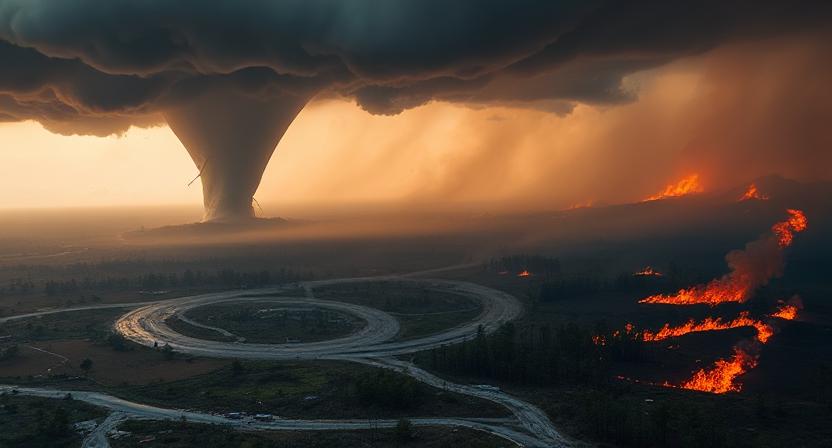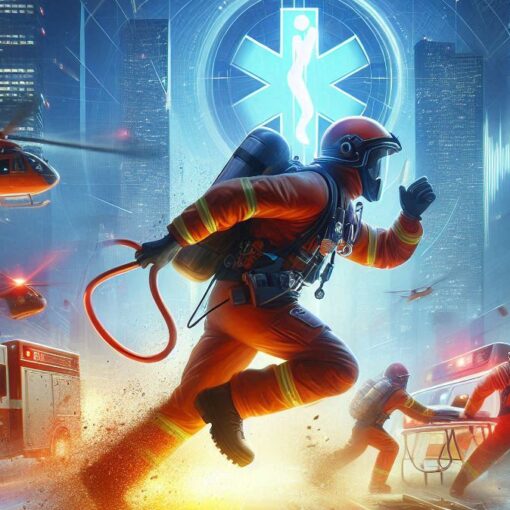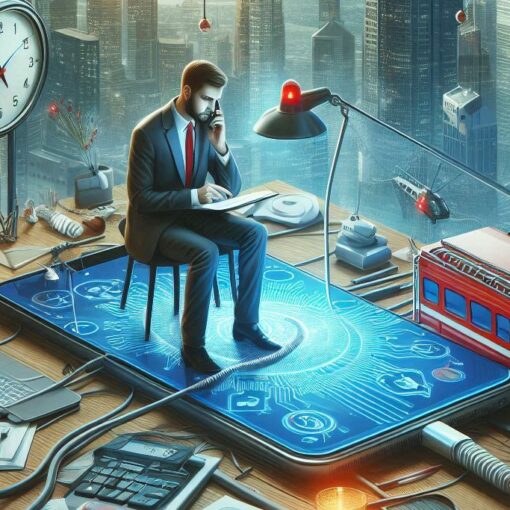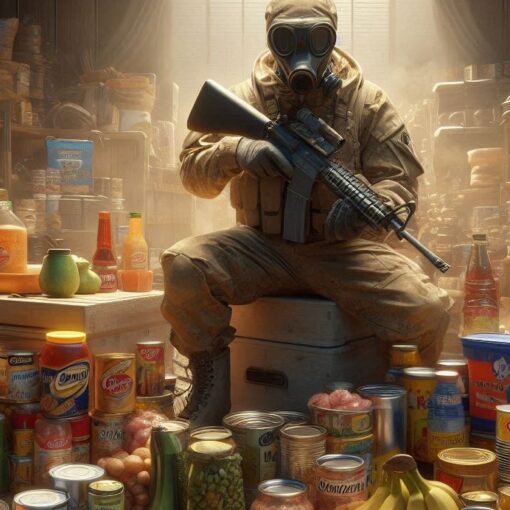Please Note: This post may contain affiliate links. If you click one of them, we may receive a commission at no extra cost to you. As an Amazon Associate, I earn from qualifying purchases.
Top Takeaways and Key Concepts
- Build an emergency plan — Identify local risks, set evacuation routes, and practice scenarios with your family.
- Stock essential supplies — Keep at least three days of water, food, and medical items ready at all times.
- Rotate and maintain your kit — Check expiration dates regularly and replace or refresh old items as needed.
- Stay informed and connected — Use a battery-powered radio or backup power to follow alerts during outages.
- Keep calm and adaptable — Focus on realistic risks, stay organized, and prepare smartly without panic.
Summary of This Article
This article simplifies disaster preparedness into clear, doable steps for anyone wanting peace of mind during emergencies. It covers the importance of creating a household plan, stocking up on water, food, and first aid, and practicing evacuation routes. Readers learn how to maintain supplies, stay informed during power outages, and prepare calmly without fear. The main message is that prepping isn’t paranoia—it’s smart planning that keeps you and your loved ones safe, secure, and ready for whatever comes your way.
Short Video Version of this Article
So, you’re thinking about prepping, huh? That’s cool. Maybe you watched a movie where everyone was totally unprepared for the world falling apart. Or, you noticed that the weather has gone kinda wild lately. Whatever got you here, it’s great you want to be ready. Let’s talk about the basics of disaster prep without making your head spin.
Prepping isn’t just about panic. It’s more like being smart. Picture this: having what you need when things get tricky. It’s kinda like having an extra slice of pizza when you really want it. Who wouldn’t want that, right?

Start with the essentials. Water is key. You need about a gallon per person each day. That’s a lot, so maybe grab some containers. You could fill them up and have them ready. And food? Non-perishable snacks are your friends. Think canned beans, dried fruits, or granola bars. Easy to pack and they last.
Don’t forget a first aid kit. You might not be playing doctor, but cuts happen. Band-aids, antiseptic wipes, maybe some pain relief—just in case.
Think about how you’ll stay informed. If the power goes out, a battery-powered radio can be a lifesaver. You want to know what’s happening outside, right?
Gathering supplies can feel like a scavenger hunt. It’s kind of fun! Make a list, and go shopping. Just don’t let getting ready overwhelm you.
Also, practice makes perfect. Maybe run through your plan with family or friends. Knowing what to do can make a big difference. It’s nice to feel confident.
You’re not alone in this. Lots of people are getting into prepping, and they’re doing it their way. Just take it step by step. Before you know it, you’ll feel ready for anything. You got this!
What Happens When Stuff Hits the Fan?
 Imagine this: You’re minding your own business when suddenly, nature decides to throw a tantrum. The skies get all stormy, or maybe the ground does the hula, and next thing you know, you’re smack in the middle of a disaster. What now? Here’s the deal:
Imagine this: You’re minding your own business when suddenly, nature decides to throw a tantrum. The skies get all stormy, or maybe the ground does the hula, and next thing you know, you’re smack in the middle of a disaster. What now? Here’s the deal:
Evacuations Happen: Sometimes, you’ve got to get out of Dodge. Make sure you can lock up your place quickly because leaving your front door wide open is a free invite to anyone with sticky fingers.
Supermarkets Turn into War Zones: The moment disaster strikes, everyone suddenly needs canned beans and water like they’re the last people on Earth. If you don’t want to be left with the last can of mystery meat, stock up beforehand.
Roads Can Get Messy: Highways might turn into parking lots or even worse, become completely unusable. Make sure you’ve got what you need at home if your car’s not going anywhere (more on this later).
Your Home Could Take a Hit: Whether it’s a flood, fire, or an earthquake that’s got a grudge, your house might not come out unscathed. Keep your emergency stash in a place that’s safe but easy to grab if you’ve got to hightail it out of there.
Getting Trapped Inside: Earthquakes don’t exactly knock first. If you find yourself stuck inside, make sure you’ve got a phone or something handy to call for help. Also, a little habit of keeping your phone charged might just save your bacon.
Looting Isn’t Just in Movies: If things go south for long enough, some people might forget their manners. Be ready to defend what’s yours and plan your escape routes like you’re in a spy movie.
How to Get Ready Without Losing Your Mind
The first thing to do is some thinking. Think about where you live and what could go wrong. No need to stress about a zombie apocalypse. Just focus on what’s real.
Do you have mountains nearby? That’s great for some things. You won’t have to worry about tsunamis, but landslides? Yeah, those can happen. If you live out in the woods, that’s pretty cool, but it also means no quick trip to the store for milk if something goes down.
Maybe you live in a city. Lots of people around, but there’s also stuff like floods or heavy storms. Knowing what could happen helps you prepare.
Take a moment to think about all this. Write it down if you want. It’s like making your own little survival map in your head. It feels nice to know what you’re up against, right?
You’re not alone in this. Lots of folks are in the same boat. It’s all about being smart. Take your time. You’ve got this!
What Should You Have on Hand?
Here’s the fun part: building your emergency kit. Think of it as the ultimate scavenger hunt where the prize is not having to eat stale crackers for a week.
Medical Stuff: People get hurt during disasters, and not just from tripping over their own feet. Keep a solid first aid kit ready. Here’s a quick checklist:
Band-Aids (all shapes and sizes, because boo-boos don’t come in one size)
Gauze dressings (for when Band-Aids just won’t cut it)
Sterile gloves (you don’t want to add “infection” to your list of problems)
Painkillers (because ouch)
Antiseptic cream (germs are gross)
Regularly check that your meds aren’t expired. If they are, either replace them or research if they’re still good past the date—some things don’t go bad overnight, but you didn’t hear that from me.
Water: You’re going to need enough water for at least three days, and that’s just for drinking. Collecting rainwater is cool, but remember to boil and filter it, especially if it’s coming off the roof where the neighborhood pigeons like to hang out.
Food: Eating canned tuna every day sounds like a punishment, so stock up on a variety of non-perishables. You’ll need about 2,500 calories a day, per person, to keep everyone from getting hangry. Keep the food rotation going, and please, only buy stuff you’d actually eat.
Prepping Your Prep
 Before you get too comfy, double-check that your stash is in order. Set a schedule to rotate supplies so nothing expires on you. Canned goods usually last a while, but there’s no need to hoard 10-year-old beans unless you’re into that sort of thing.
Before you get too comfy, double-check that your stash is in order. Set a schedule to rotate supplies so nothing expires on you. Canned goods usually last a while, but there’s no need to hoard 10-year-old beans unless you’re into that sort of thing.
Emergency Food First: If the power’s out, start with the fresh stuff, then move on to frozen, and finally, hit up your emergency stash. Know the safe temperature zones for perishable food because nobody wants food poisoning on top of everything else.
When It’s All Over
Once the dust settles, restock your supplies with what you liked and ditch what you didn’t. If you hated canned spinach before the disaster, you’re definitely not going to develop a taste for it afterward.
Extra Tips for Your Emergency Menu
Don’t forget the kiddos and pets—they have special needs too.
Vinegar-based condiments like ketchup and mustard have long shelf lives, so stock up.
Stash away some treats because a bit of sweetness can go a long way during stressful times.
You really need a way to cook if the power goes out. A little portable gas stove can be a lifesaver. Or a barbecue! You can whip up a meal outside and feel like a chef. It’s fun, right?
Water is super important. If you’re filtering it, boiling might not be enough, especially for heavy metals lurking in there. That’s not a fun surprise. Spend a bit on a good filter. It’s worth it.
Disaster prepping sounds big and scary, but it’s really just being smart. You’re not being paranoid, just ready. Imagine all the chaos at the store when something goes wrong. Everyone fights over those last cans of beans. Wouldn’t it be better to have your own stash at home?
You’re taking care of yourself and your loved ones. That’s what it’s all about. It’s nice to have peace of mind. It really is.
Just keep things simple and do what feels right for you. You’ve got this!
Featured Snippet: Disaster preparedness is about smart planning, not panic. By creating an emergency plan, stocking essential supplies, staying informed, and practicing calm adaptability, anyone can safeguard their family, reduce stress, and respond effectively during unexpected crises.
Frequently Asked Questions
What are the first steps in building an emergency plan?
Start by identifying local risks, mapping evacuation routes, and assigning roles for each family member. Practice your plan regularly to ensure everyone knows what to do in an emergency.
How much water and food should I store for emergencies?
Keep at least one gallon of water per person per day and a three-day supply of non-perishable food. Choose items that don’t require refrigeration or special preparation.
How often should I rotate or check my emergency supplies?
Inspect your supplies every six months. Replace expired food, medications, and batteries, and update your plan as your family’s needs change.
What’s the best way to stay informed during a power outage?
A battery-powered or hand-crank radio is essential for receiving weather alerts and updates when power and internet access are down.
How can I prepare my home for disasters like floods or earthquakes?
Secure heavy furniture, check your home’s foundation, and store your emergency kit in a high, easily accessible spot. Know your community’s evacuation zones and shelters.
What should I include in a family communication plan?
List key contact numbers, choose an out-of-town emergency contact, and establish a meeting point if separated. Keep copies of this plan in your wallets and emergency kits.
How can I stay calm and think clearly during an emergency?
Focus on what you can control, take slow breaths, and follow your plan. Practicing beforehand builds confidence, helping you respond calmly when real emergencies strike.

Kevin Collier is a seasoned outdoor enthusiast and writer for Trekbug.com, specializing in outdoor adventures, survival strategies, and prepping insights. With a deep love for nature and a commitment to self-sufficiency, Kevin empowers readers to embrace the wilderness confidently. He shares valuable tips, practical techniques, and inspiring stories, helping both novice and experienced adventurers develop essential skills for surviving and thriving in the great outdoors.




